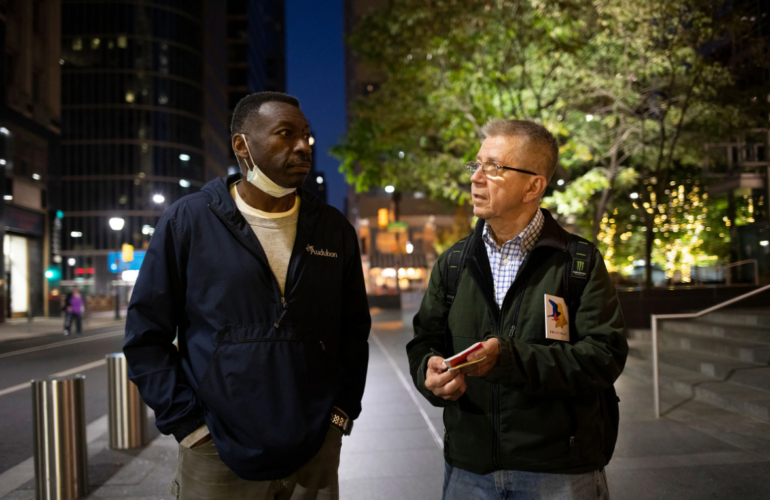
Feature photo: Keith Russell and Stephan Maciejewski look for deceased birds in October of 2021 | Photo by Luke Franke
There was a time when Keith Russell, who currently works as an ornithologist and urban conservation program manager for Audubon Mid-Atlantic, was unaware of the severity of migratory bird deaths from building collisions in Philadelphia. He had been working at the Academy of Natural Sciences in Philadelphia (ANSP) when he noticed dead birds frequenting the sidewalk and an increase in the number of people bringing dead birds they found to the Academy. Keith was inspired to become involved in scientific research, public awareness, and advocacy to prevent fatal bird collisions, a commitment spanning the last three decades.
From Tragedy to Action: The Birth of Lights Out Philly
On October 2, 2020, a mass collision event occurred in Philadelphia. The regional weather system precipitated a large-scale migration. During peak migration, there is a greater likelihood of bigger collision events. With low clouds, fog, drizzle, and no wind in Philadelphia, birds became disoriented, circled, and then flew toward nocturnal building lights. These conditions mimicked a mass collision that happened in 1948 when there was more fog. Keith admits that the 2020 mass collision took him by surprise. An overwhelmed monitor, Stephen Maciejewski, called him around sunrise. Keith hopped out of bed and went out to help him. Together they collected almost 400 birds with an estimated total of 1,500 collisions in the Philadelphia area. Struck instantly with a feeling of disaster, Keith focused on helping as many birds as possible and collecting data from those who had already perished.
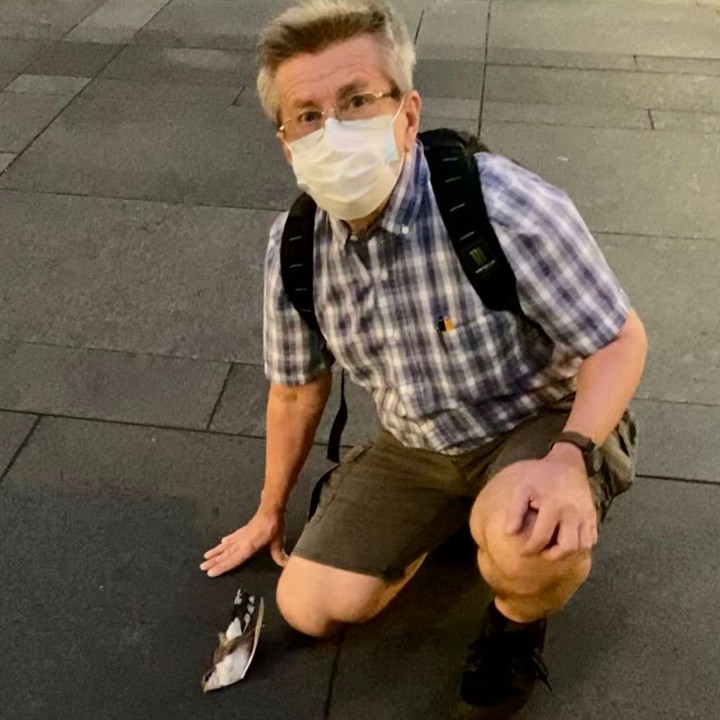
Stephen Maciejewski monitoring urban bird deaths | Photo by Keith Russell
Despite the ongoing COVID pandemic, Stephen quickly raised awareness by contacting the Philadelphia Inquirer, which published an article, and the news spread worldwide within days. Collaboration and strategizing began immediately behind the scenes. Keith and Robert Peck of the ANSDU published an op-ed suggesting a “Lights Out” initiative in Philadelphia. Bird Safe Philly was formed with the capacity and collaboration of five organizations; the Academy of Natural Sciences of Drexel University, Delaware Valley Ornithological Club, Audubon Mid-Atlantic, the National Audubon Society, and local chapters Valley Forge Audubon Society and Wyncote Audubon Society. Then in April 2021, Bird Safe Philly launched Lights Out Philly. Getting corporate collaboration in the initiative, such as that of Comcast, encouraged other businesses around Philadelphia to participate in the voluntary program that pledges to “turning off and/or blocking as many external and internal building lights as possible at night when bird migration is occurring during the spring and fall.”
Philadelphia’s Legacy: A Historical Perspective on Migratory Bird Collision Research
Keith points out that Philadelphia’s key location along the Atlantic Flyway has impacted the study of migratory birds. Pennsylvania has a long, prestigious history in the study of migratory birds beginning with the Delaware Valley Ornithological Club (DVOC) in 1890. The group published their observations in the journal Cassinia.
The study of migratory birds interacting with Philadelphia’s industrial and post-industrial built environment began at the turn of the 19th to 20th century. In 1896, the Philadelphia City Hall was lit. At the time, it was the tallest building in the city. Immediately, the collision of a Sora into the building occurred and was publicized in the Phila Bulletin after city hall staff found the unusual bird dead. DVOC members read the story in the Bulletin and approached city hall to monitor the building.
The question emerged among DVOC members as to why the marsh birds were colliding with the building. Bird specimens were collected and taken to the Academy of Natural Sciences of Philadelphia for better scientific study.
By the 1920s, research on migratory bird collisions seemed to wane. Scientific studies and publications were largely forgotten. Two decades later, the tragic mass collision event of September 10th and 11th, 1948, in Philadelphia and other major eastern U.S. cities, caused by seasonal weather patterns, cloud cover, and man-made illumination, called attention to the issue again. Due to a loss of knowledge, researchers in Philadelphia in 1948 appeared to be less understanding about how lights and weather combine to cause collisions than they were in 1898.
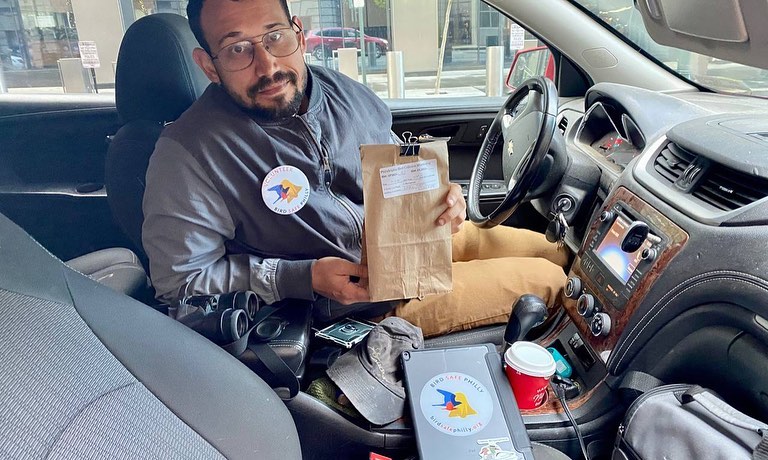
Robin I. taking an injured bird to rehab
Evolution of Inquiry: Advancements in Migratory Bird Collision Research
How has research on migratory bird collisions changed since the inception of the DVOC in the 1890s? Some things remain the same, such as taking observation notes and creating visual depictions (previously drawings but now photographs). With the advancements in science and technology, tissue samples can be analyzed on a chemical and genetic level. The role of previously undiscovered ectoparasites (organisms that live on the skin) can also be examined. Samples can now be preserved, which is important for future analysis.
Institutions like the Academy of Natural Sciences are backlogged. It often takes months, if not longer, for bird specimens to be logged and analyzed. According to Keith Russell, plastic zip-lock bags can preserve frozen samples for years, alleviating previous concerns over the degradation of a specimen and the loss of information that inhibits data collection.
Advancements and utilization of radar facilitate the detection of flocks of migrating birds at night allowing for the prediction and potential avoidance of bird collision events.
Pioneers and Innovators: Advancing Migratory Bird Collision Research
In 1979, Dr. Daniel Klem, Jr., Ph.D., D.Sc. of Muhlenberg College in Allentown, Pennsylvania, took the helm of a legacy of migratory bird collision research. He continued his instrumental work for decades, reinforcing Pennsylvania’s extensive history of research in migratory bird collisions that had begun with the DVOC almost a century prior.
Modern-day researcher Dr. Scott Loss at Oklahoma State University has compiled data, including previously unpublished research, that puts migratory bird deaths in the United States due to collisions at 365 million to 1 billion every year, with some species more prone to collisions and death than others. According to Keith, research being published soon may double Loss’ current estimates.
The Powdermill Avian Research Center (PARC) in western PA, a subset of the Carnegie Museum of Natural History, is well-known and distinguished for its bird banding program spanning over fifty years. PARC submits collected data to the National Bird Banding Laboratory, which with the Canadian Wildlife Service Bird Banding Office, collates data for migratory birds across North America. The Research Center is more recently an important site for the research of local and migratory bird collisions, having created innovative experimental setups that test the effectiveness of products designed to curtail present and future collisions. The research at PARC has provided solutions that are preventing fatal collisions in Philadelphia and other cities across North America.
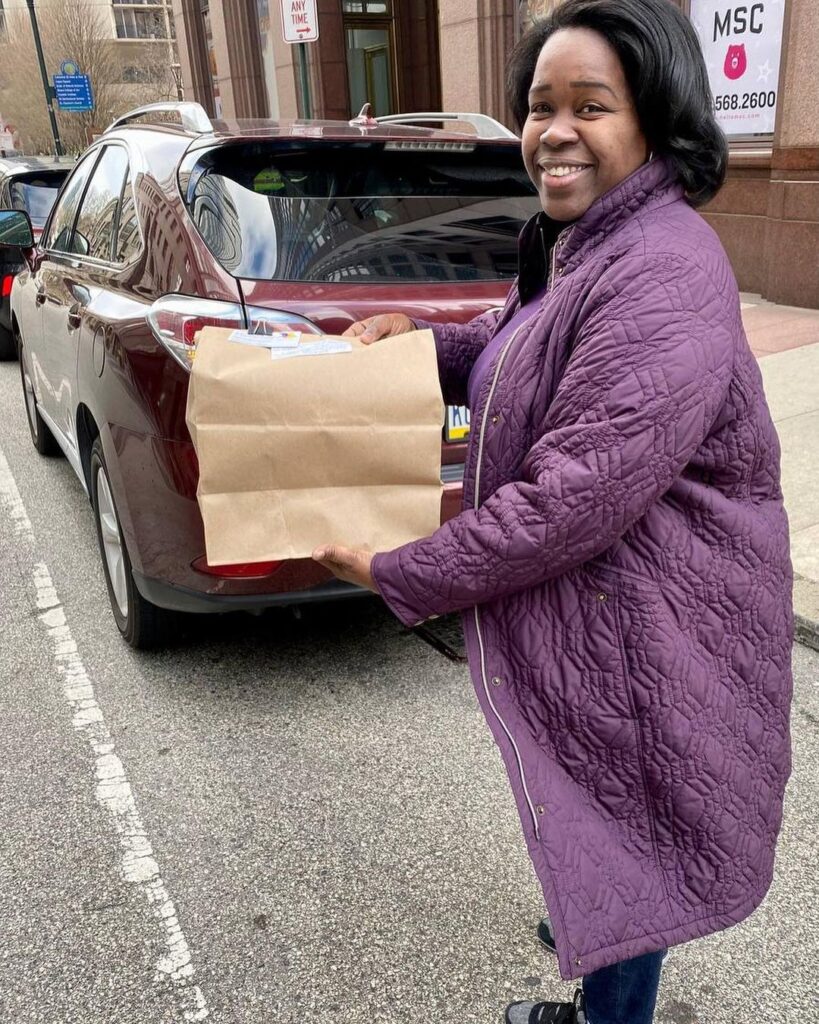
Tanya B taking injured bird to rehab Stephen Maciwjewski
Empowering Citizen Scientists: A Collaborative Approach
The study of bird collisions is not limited to professional scientists or research institutions. An integral citizen scientist component exists, especially in Philadelphia. The methodology of focus monitoring involves volunteers with scheduled times and set routes working in an objective, consistent manner. Activities include surveying for birds and ensuring building lights are off. Volunteers also help by driving injured birds to rehabilitation centers. The primary rehab facility used in Philadelphia is the Wildlife Clinic at the Schuylkill Center for Environmental Education. The use of internet-based devices such as computers and cell phones allows for the instantaneous capture of information, ensuring placement in the permanent archive and creating the opportunity for citizen science initiatives. On the iNaturalist website, anyone can capture, share, and retrieve information about species of flora and fauna across the globe and focus on specific regions such as Philadelphia.
Beyond facilitating and assisting in scientific data collection and taking preventative actions, advocacy and spreading awareness are vital roles anyone can have in the quest to avoid bird collision events. Advocacy groups such as Bird Safe Philly rely on a collaborative model to succeed. Organizations historically involved in such collaborative efforts, include the Philadelphia Zoo Conservation Department, Delaware Valley Ornithological Society, the Academy of Natural Sciences, The National Audubon Society, as well as several regional Audubon chapters. The inclusion of institutions such as Temple University and ongoing work with the University of Pennsylvania not only assists in the cause, but can be a source for additional funding in the underfunded effort. Awareness is further created by exhibits such as one at the John Heinz National Wildlife Refuge in Philadelphia.
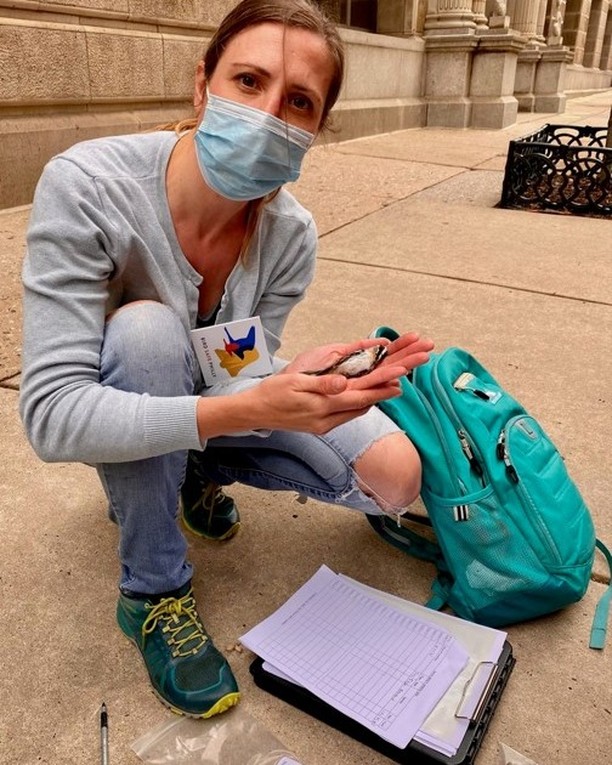
Stephanie monitoring bird collisions | Photo by Stephen Maciejewsi
Building a Bird-Friendly Future: Progress and Prospects
Until recently, Keith was managing and coordinating much of the training and scheduling of volunteers, data collection, and analysis being done through the collaborative work of Bird Safe Philly. The Academy of Natural Sciences has since taken on much of the work of managing the Bird Safe Philly volunteers. Collected data is analyzed between migration seasons. Keith continues to have a large role in data analysis and advocacy.
When it comes to augmenting existing buildings and designing new buildings in Philadelphia, powerful building constraints exist, but the past year has seen positive change. The retrograde and construction of bird-friendly buildings are on the rise. As the need increases, the cost inhibitions of taking measures to be bird-friendly will hopefully lessen. Looking into the future, Independence National Park has expressed interest in replacing the wall glass lying behind the Liberty Bell with bird-safe materials, alleviating the danger the aesthetically pleasing wall poses to birds.
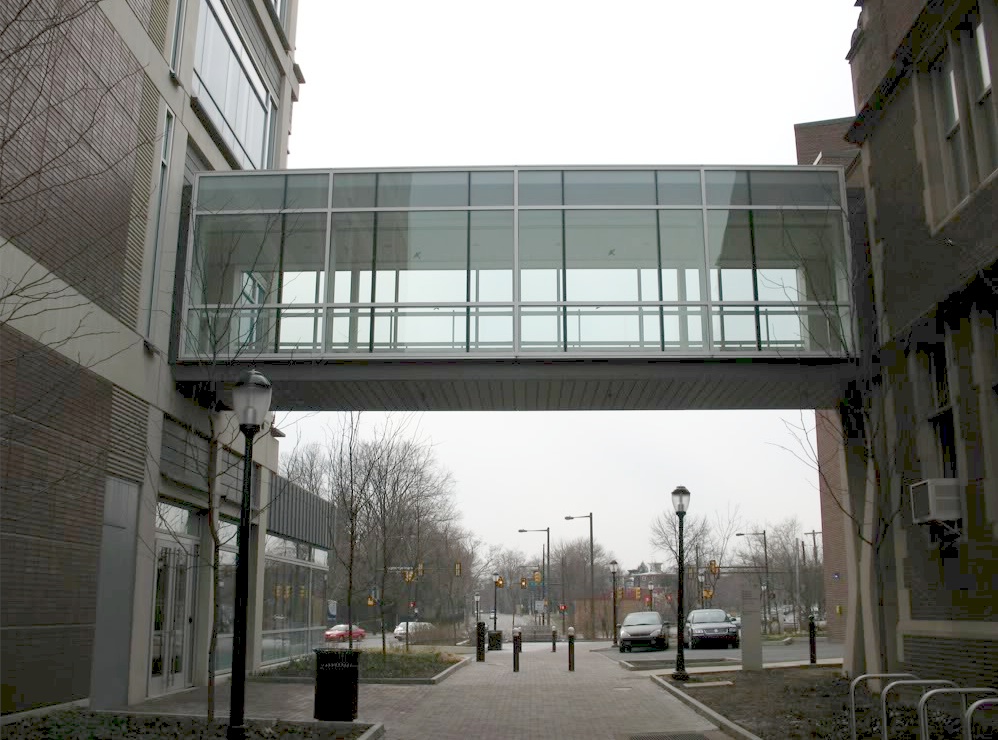
University of Pennsylvania, Hill Pavillion before bird safe stickers | Photo by Chloe Cerwinka
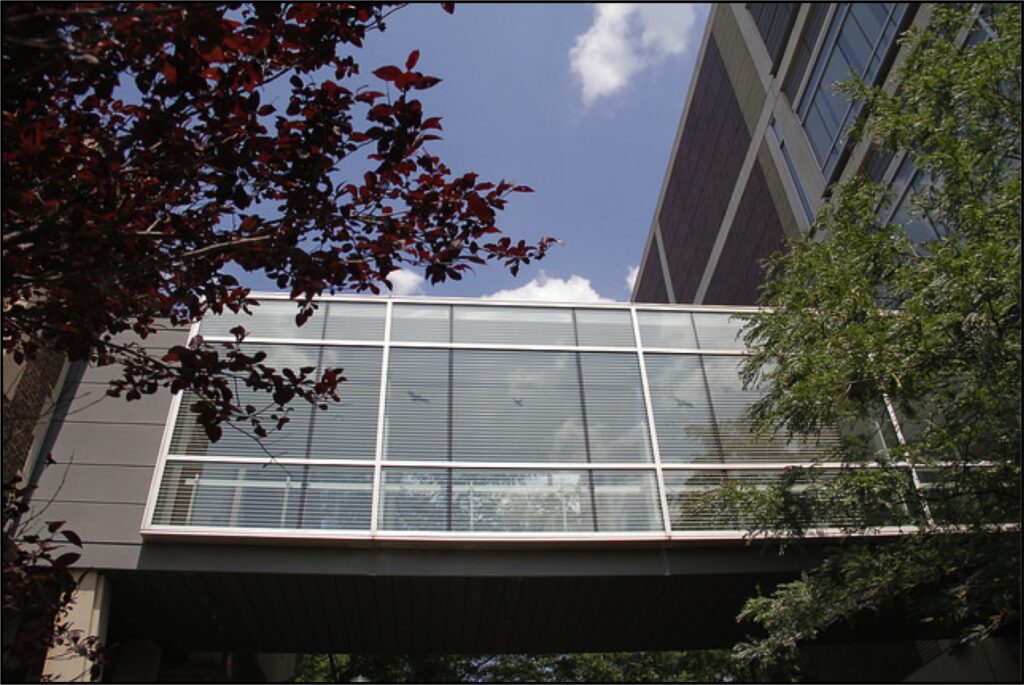
University of Pennsylvania, Hill Pavillion after bird safe stickers | Photo by Chloe Cerwinka
Mitigating Bird Collisions: Practical Solutions
Even though urban areas like Philadelphia and high-rise buildings receive a lot of attention for bird collisions, the greatest number of collisions and deaths occur in single-family homes and low-rise buildings. What can Pennsylvanians do in their own homes and businesses? Keith advises buying products such as those made by Feather Friendly. Sticker dots placed evenly on the window surface or evenly spaced cords will allow birds to perceive an impassable barrier. Singular or unevenly spaced decals, including those of birds and leaves, are not effective as they appear as avoidable markings and birds may try to fly around them but still collide with the glass. Turning off lights at night in windowed areas, especially during spring and fall migration can prevent bird collisions and fatalities. Resources such as BirdCast, which shows real-time bird migration densities in the United States, allow citizens to know when to be more vigilant to turn off nocturnal lighting and cover their windows. Bird Safe organizations have since spread to cities like Harrisburg, PA providing more opportunities for volunteerism.
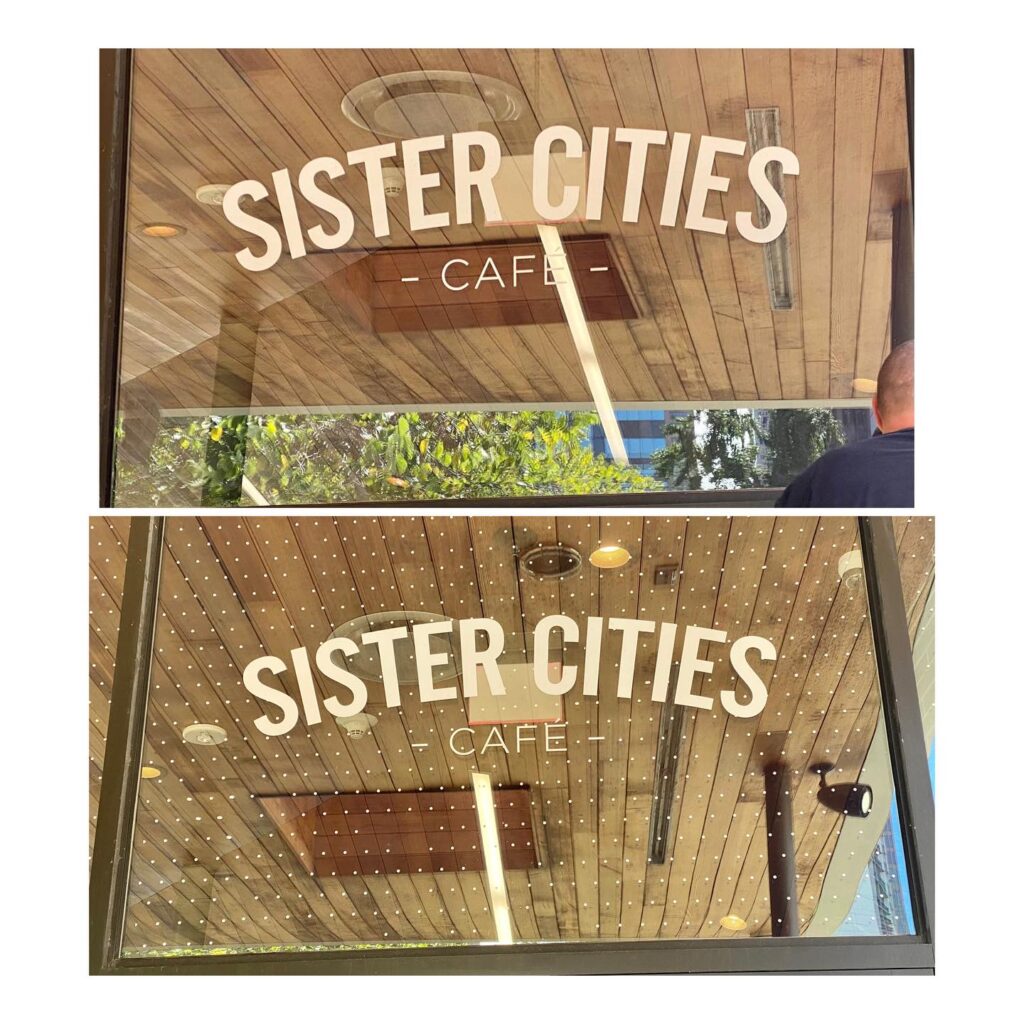
Sister Cities Cafe in Philadelphia applied bird safe window stickers | Photo by Stephen Maciejewski
Additional Resources:
History – Powdermill Nature Reserve
Field-testing effectiveness of window markers in reducing bird-window collisions – PMC
audubon.org/magazine/spring-2022/philadelphia-darkens-its-skyline-protect
Hundreds of migratory birds found dead after flying into Philadelphia buildings
Philadelphia Sees Largest Mass Collision Event in the City in 70 Years | Audubon
The Bird Collision Problem in Philadelphia: A Historical Perspective
PA Game Commission: Birding
UPenn: Bird Friendly Penn
Written by Martha Moon, PPFF Intern, with contributions by Keith Russell
Photos supplied by Keith Russell




